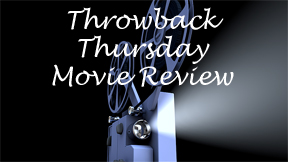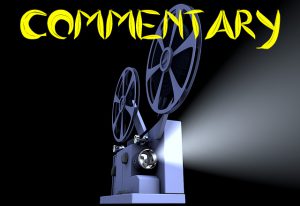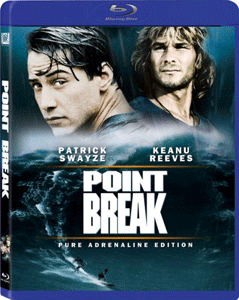Movie narratives aren’t usually shot chronologically, but “Point Break” (1991) plays like the filmmakers are learning and improving as they go. The opening walk-and-talk between new cop Johnny Utah (Keanu Reeves) and police chief Harp (John C. McGinley) is horribly scripted. Harp seems to welcome Johnny, then calls him an a—h— by the end of the conversation. The tone is all messed up.
Bad cops
The first half of “Point Break” is dumb even by the standards of 1980s-90s action movies. The cops’ inability to catch the bank-robbing Ex-Presidents (they wear masks of Reagan, Carter, Nixon and Johnson) gives them an air of incompetence that filters to every subsequent moment of sleuthing and raiding.
Since Johnny’s veteran partner Angelo is played by Gary Busey, I couldn’t help but wonder if he is corrupt. It’s the best explanation for how the robbers get away with it every time. (Ultimately, though, it is refreshing to see Busey play a good guy.)

“Point Break” (1991)
Director: Kathryn Bigelow
Writers: W. Peter Iliff (screenplay, story), Rick King (story)
Stars: Patrick Swayze, Keanu Reeves, Gary Busey
On the other hand, the cops are so incompetent that it makes Johnny’s undercover scheme sane within the narrative’s overall stupidity. He takes up surfing in order to ferret out the criminals, perhaps led by Patrick Swayze’s Bodhi. He gets lessons from Bodhi’s ex, Tyler (Lori Petty, the era’s go-to athletic actress).
Catching the wave
The second half of “Point Break” is why it’s considered an action classic and why Kathryn Bigelow broke into the boys’ club as a respected genre director. You’ll know the moment it switches: the first skydiving scene. It’s majestic, and Bigelow knows it. She lingers on the gliding skydivers and Mark Isham’s score turns pretty.
The director tries to spice things up early on with unusual lighting. The background sun silhouettes the surfers (perhaps to hide stunt doubles) and a beach football scene is lit with car headlights. But I was aware of the style attempts and not impressed.
Eventually, Bigelow gives us strong scenes of surfing (a notoriously hard sport to capture in movies), a great foot chase through a residential neighborhood, a gritty car pursuit, and then another skydiving sequence. The second one features Reeves and Swayze exchanging gruff dialog, seemingly in the air. This is amazing stuff for the tech of 1991.
Rivals who can relate
Swayze – People’s Sexiest Man Alive in 1991, dripping with both charisma and ocean water — in particular elevates the screenplay by W. Peter Iliff (“Varsity Blues”). Swayze pushes “Point Break” to become a tragic story of a hero and villain who like and respect each other. But Bodhi can’t kick his adrenaline habit.
And Reeves – although known for turning an acting corner with “The Matrix” at the other end of the ’90s — isn’t too bad. He’s basically playing Keanu Reeves, and “Point Break” is a radical Keanu Reeves jam. Compare him to Paul Walker in “The Fast and the Furious” — a borderline-thievery of this story that replaces surfing with car culture – and it’s clear that acting can get worse from a lead cast for his looks.

Actually, “Point Break” itself features some awful acting. Witness the fireside beach chat where the surfer dudes drool over the idea of catching the biggest waves the planet will see in a century. (Bodhi says a brewing Antarctic storm will have effects all the way up through the Pacific – LOL.) Some of these surfers’ performances make Reeves look like Laurence Olivier by comparison, as Johnny sits there thoughtfully.
“Point Break” edges past the 2-hour mark, and it’s not good enough to earn that length. A tighter first half could’ve made it a 100-minute action classic. As it stands, it should nonetheless be treasured for early Bigelow and Reeves and vintage Swayze.

